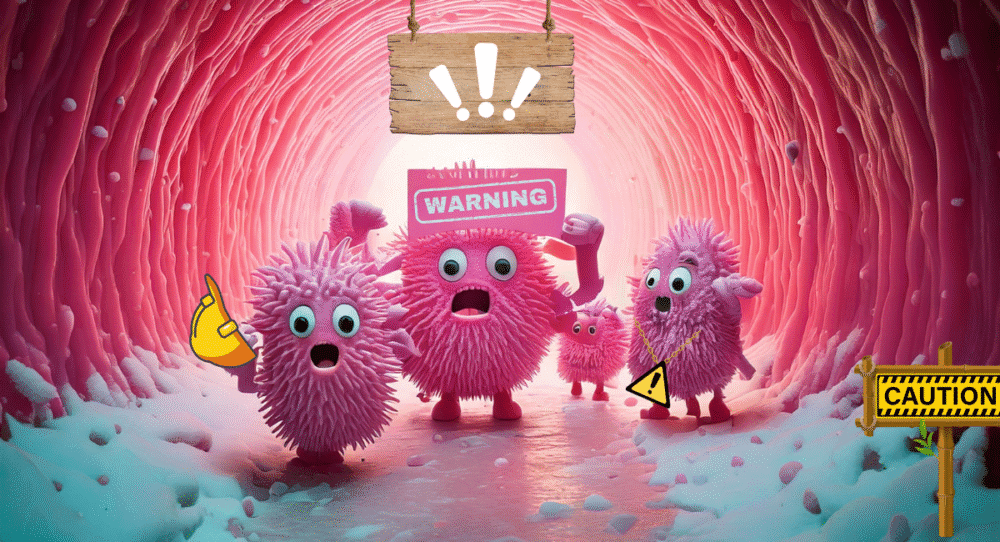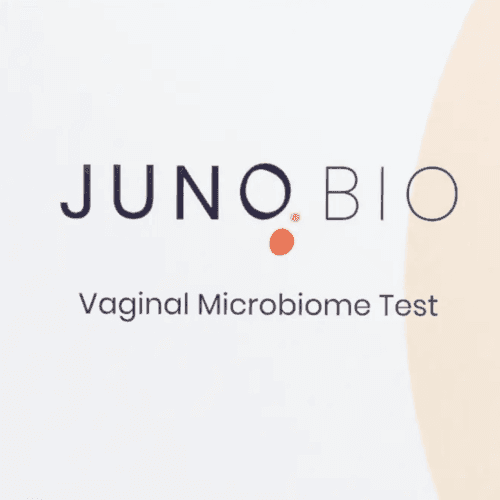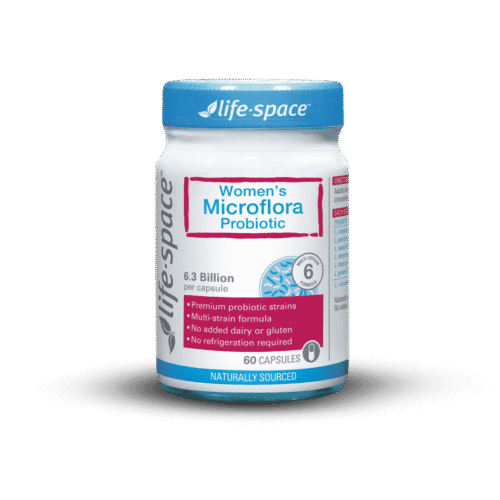What are the first signs of bacterial vaginosis?
Bacterial vaginosis (BV) often starts quietly. For many people, the first signs are so subtle they’re easy to dismiss – a faint change in vaginal scent, or a bit more discharge than usual. But these early signs are important.
BV is caused by an imbalance in vaginal bacteria, and while it’s possible, BV doesn’t tend to go away on its own. Ignoring early vaginal infection symptoms can lead to persistent discomfort, disruption of the vaginal microbiome, and a higher risk of sexually transmitted infections and reproductive complications.
Here are seven bacterial vaginosis symptoms that signal your vaginal microbiome needs attention – and what to do about them.
1. A fishy or sour-smelling vaginal discharge
Fishy vaginal odour is the hallmark symptom of BV. The smell is often described as fishy or foul, especially after sex or during menstrual bleeding. That’s because BV-related bacteria release amines – chemicals that react with semen or menstrual blood and intensify the odour. The smell may be stronger than your usual vaginal scent and may become more noticeable during certain times of your cycle.
If your bacterial vaginosis symptoms include a lingering change in smell – fishy, foul, or otherwise unpleasant – it’s worth paying attention. Fishy odour symptoms are one of the most commonly reported early signs, and often what prompts someone to investigate further.
Some people notice that the fishy odour fluctuates – stronger after sex or your period, then fades. Others find it persistent. Either way, any bad smell that’s new to you is a clue your vaginal flora might be out of balance.
2. Thin, watery, grey or white discharge
Discharge is normal, healthy, and expected – but its colour, texture, and odour can tell you a lot about what’s going on inside your vagina. Healthy discharge tends to be creamy, clear, or slightly white, and varies throughout your menstrual cycle.
Vaginal discharge from BV tends to be pretty different – thin, watery, greyish, and can soak through underwear quickly.
Watery discharge may not seem like a big deal at first, especially if you already have a discharge pattern you’re familiar with, and it comes and goes. But if your vaginal discharge changes suddenly, especially if paired with discomfort or fishy odour symptoms, that’s a BV red flag.
If you’ve been noticing persistent discharge, BV might be the cause, especially if the texture or smell is different to what’s normal for you. These changes are among the most obvious BV warning signs.
While discharge can vary naturally depending on ovulation, sex play, or even what you’ve eaten, consistency is key – if your discharge suddenly takes a turn for the worse and doesn’t return to your normal, pay attention.
3. An unpleasant ‘squish’ or damp feeling
One of the more subtle bacterial vaginosis symptoms is simply feeling too wet. Many people report that one of their first clues that something was off was a consistent dampness in their underwear, even when they weren’t aroused or exercising. That soft ‘squish’ can be an early and easy-to-overlook signal that something has changed in the vagina.
This increase in discharge may not always be noticeable visually, but if your underwear is feeling unusually damp or you’re changing liners more frequently than usual, your vaginal microbiome might be struggling.
When dampness persists without a clear reason, it should be considered one of the more common vaginal infection symptoms.
4. Stronger odour after sex or your period
BV-related odours often get worse after unprotected sex or during/just after your period. That’s because both semen and menstrual blood are alkaline, raising vaginal pH. BV-related bacteria love a more alkaline environment – they flourish, releasing more amines and worsening the smell.
You may not notice an odour every day, but if you become aware of bad smells after sex or following your period, it may be a pattern worth tracking. These fluctuations are still considered key BV warning signs even if you’re asymptomatic at other times.
Remember, your vaginal odour is unique and personal – but sudden, unpleasant or uncomfortable changes should never be ignored.
5. Itching, irritation, or mild burning
BV isn’t usually itchy – at least not like a yeast infection – but BV can definitely be irritating, depending on which bacteria are there. You might feel a mild burning sensation when you urinate, or itching inside or around the vaginal entrance. Some people report stinging, while others describe it as a vague sense of dryness or inflammation.
These are frequently dismissed as sweat irritation or shaving rash, but when these vaginal infection symptoms persist alongside discharge or odour, BV should be considered.
It’s also common for BV to irritate the vulva because of the constant discharge, making the skin more prone to friction and discomfort. Something we hear a lot here at My Vagina is the feeling that the discharge itself is irritating.
6. Recurring symptoms after antibiotic treatment
This is one of the most frustrating parts of BV for many people. You get treated with antibiotics – perhaps multiple times – only to have symptoms return. Why? Because BV bacteria often hide in protective biofilms, making them harder to eliminate fully.
Antibiotics may reduce bacterial levels temporarily, but they don’t always disrupt the biofilm or restore your beneficial bacteria. Additionally, many factors can impact protective bacterial colonies, from hormone levels to the gut microbiome.
If you’re caught in this loop, you’re not alone. This is one of the clearest BV warning signs that your body needs a different approach.
It’s also important to consider your sexual partner – BV bacteria and biofilms can and do pass back and forth, especially when sexual partners are untreated. This is where partner treatment becomes essential.
7. No symptoms, but BV was picked up on a test
Sometimes, BV is completely silent. You may only find out about it after a vaginal microbiome test, pap smear, or STI screen. That doesn’t mean it’s not doing damage – even asymptomatic BV is linked to increased STI risk, poor outcomes in pregnancy, and long-term microbiome disruption.
Even without classic bacterial vaginosis symptoms, your test result is a sign to act. Treating it early can prevent harder-to-manage problems later on.
Why early detection matters
BV isn’t life-threatening, but it is serious. It weakens the natural protective mechanisms of the vagina, increases inflammation, and makes it easier for harmful bacteria and viruses to take hold. Left unchecked, BV can become chronic – the kind of condition that flares up again and again, often after your period, sex, or stress.
Early intervention means:
- Less recurrence
- Fewer antibiotics
- Better microbiome health
- Lower risk of developing conditions like PID, endometritis, or vulvodynia
Recognising vaginal infection symptoms early – even subtle ones – means you can take charge of your vaginal health.
Prevention tips: supporting your vaginal ecosystem
While not every case of BV can be prevented, there are evidence-based ways to support a healthier vaginal microbiome and reduce your risk:
- Avoid douching or internal soaps – these disrupt pH and flora
- Use condoms with new or multiple partners
- Be mindful of bubble baths, scented toilet paper, and synthetic underwear
- Don’t overtreat with antibiotics if not necessary
- Introduce probiotics that are vaginally preferable (like Lactobacillus crispatus)
- Keep your gut microbiome strong with a whole-foods diet
Understanding your unique vaginal ecosystem is key – and when in doubt, tracking irritation, discharge changes or fishy odour symptoms can give you early insight.
What to do if you think you have BV
If any of these vaginal symptoms sound familiar, don’t wait for them to worsen. You’ve got options, and no, you’re not doomed to a life of antibiotics.
Many people find that antibiotics provide temporary relief, but recurring symptoms, especially after your period or sex, often indicate the need for deeper support. At My Vagina, we take a multifaceted approach to knock out disruptive species and their biofilms, promote protective species, and support a healthy immune response, while caring for the whole person – you.
We developed the Killing BV programs to tackle BV at its roots – addressing both the bacterial imbalance and the biofilms that protect it, while offering plenty of easy-to-digest education so you can take steps to keep your vaginal microbiome in good form for life.
- For vaginas: Killing BV Vagina Treatment Program
- For penises (yes, BV can be passed back and forth): Killing BV Penis Treatment Program
These evidence-informed, naturopath-designed protocols target BV using multiple tools:
- Biofilm disruptors to break down protective layers
- Probiotics to replenish good bacteria
- Prebiotics to feed and maintain those beneficial microbes
- Antimicrobials that help reduce harmful overgrowth without carpet-bombing your flora
They’re not one-size-fits-all, and they’re designed to be as gentle as they are effective.
Understanding your goals
If you’re noticing even a few bacterial vaginosis symptoms, or recognising patterns like fishy odour symptoms, don’t brush them off. Your body is telling you something, and your vagina the messenger. Subtle changes are often your first and best clues.
By listening, investigating, and acting early, you protect more than just your vagina – you support your immunity, reproductive health, and long-term well-being.
Learn more about vaginal infection symptoms and how to understand, treat, and prevent BV for good.








